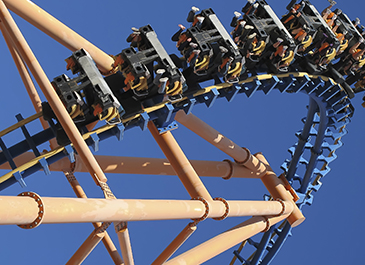Understanding Diabetes: Stabilizing a Sugary Roller Coaster
DISEASE PREVENTION & ALTERNATIVE MEDICINE / WRITTEN BY BY DR. DANNY JUI, ND

Life at the cellular level is a roller coaster fuelled by sugar. Glucose, a type of sugar, serves as an important energy currency in our body. Most of the foods we eat are converted into glucose, which is used by our cells to carry out their functions. Properly managing our intake of and paying close attention to our body’s response to this sugary fuel is key in maintaining optimal health. Keeping the blood sugar roller coaster steady on track may prevent chronic diseases such as diabetes.
Hiring the Type 1 Operator
Insulin acts as the chief operator of the roller coaster by balancing glucose levels in our body. A hormone produced by the pancreas, insulin regulates the uptake of glucose to ensure an orderly infusion of fuel into our cells. However, in the case of type 1 diabetes the operator—insulin—is deficient or absent. This absence leads to abnormally high levels of glucose left over in the blood that our cells are unable to use. Those living with type 1 diabetes may experience fatigue, weight loss and excessive hunger or thirst. Employing a new operator—using insulin injections—becomes an essential part of the treatment for people with type 1 diabetes.
Wiring the Type 2 Switch
On the other hand, the body may produce sufficient insulin, but the switch on the cells does not respond well or is resistant to the operator’s command. Known as insulin resistance, this type of faulty wiring is surprisingly common and affects approximately 25% of the North American population. A substantial and growing body of evidence now suggests insulin resistance is an underlying biochemical imbalance in not only type 2 diabetes, but also heart disease, polycystic ovary syndrome, infertility and even colon and some breast cancers. Those with insulin resistance may experience sugar cravings, night sweats, irritability, palpitations, dizziness, fatigue and weight gain. Leaving this roller coaster unstable increases the risk of developing a variety of agerelated and obesity-related diseases including type 2 diabetes.
Stabilizing Nature’s Design
New research reveals many phytonutrients that improve insulin sensitivity and stabilize blood sugar:
- Catechins in green tea have been shown to be an insulin sensitizer, pancreatic protectant and glucose absorption stabilizer.
- Bioactive compounds in cinnamon spice have been helpful in regulating blood sugar and cholesterol levels in people with type 2 diabetes.
- Charantin and polypeptide-P found in bitter melon juice are traditionally used in Chinese medicine to treat blood sugar problems and have been confirmed in many studies to be responsible for improved clinical outcome.
These current findings combined with the wisdom of maintaining an ideal body weight, exercising regularly and following individual nutrition plans appropriate for your situation all play an integral role in keeping the blood sugar roller coaster steady on track and will leave you feeling your best for years to come.
Dr. Danny Jui is a licensed Naturopathic Physician. He is the first Canadian naturopathic doctor to complete the residency in Evidence-Based Integrative Medicine at Yale University. For more information or references on this article, please visit www.DrDannyJui.com
